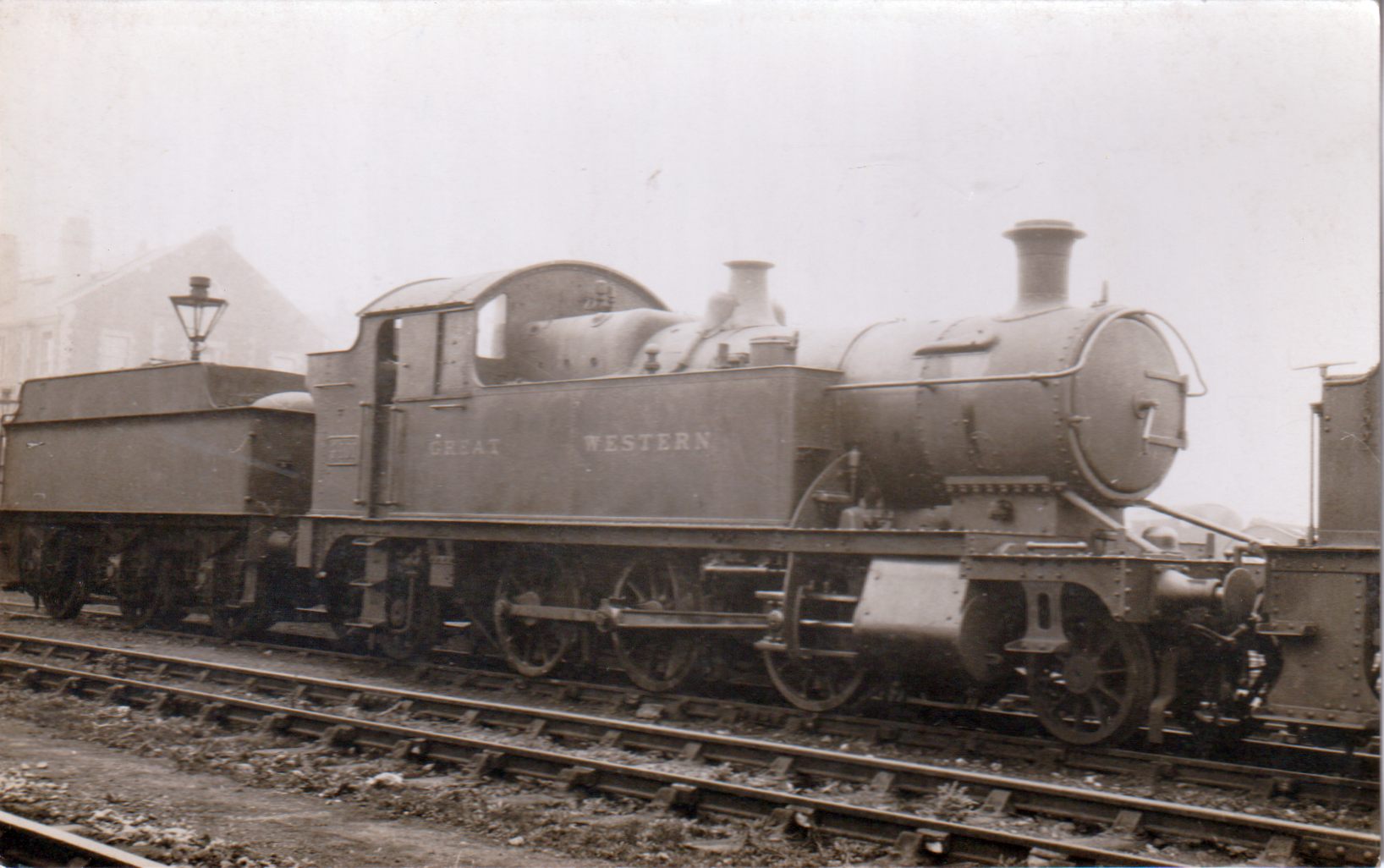GWR 4400 Class on:
[Wikipedia]
[Google]
[Amazon]
The

Class 4400 Details
at ''Rail UK'' 2-6-2T locomotives 4400 Standard gauge steam locomotives of Great Britain Railway locomotives introduced in 1904 Scrapped locomotives Mixed traffic locomotives {{UK-steam-loco-stub
Great Western Railway
The Great Western Railway (GWR) was a British railway company that linked London with the southwest, west and West Midlands of England and most of Wales. It was founded in 1833, received its enabling Act of Parliament on 31 August 1835 and ran ...
(GWR) 4400 Class was a class of 2-6-2T side tank
A tank locomotive or tank engine is a steam locomotive that carries its water in one or more on-board water tanks, instead of a more traditional tender. Most tank engines also have bunkers (or fuel tanks) to hold fuel; in a tender-tank locomot ...
steam locomotive
A steam locomotive is a locomotive that provides the force to move itself and other vehicles by means of the expansion of steam. It is fuelled by burning combustible material (usually coal, oil or, rarely, wood) to heat water in the locomot ...
.
History
They were introduced in 1904 for work on smallbranch lines
A branch line is a phrase used in railway terminology to denote a secondary railway line which branches off a more important through route, usually a main line. A very short branch line may be called a spur line.
Industrial spur
An industri ...
. The 4500 class was a later development with larger driving wheels. The 4400s were particularly used in hilly districts, notably the Princetown
Princetown is a villageDespite its name, Princetown is not classed as a town today – it is not included in the County Council's list of the 29 towns in Devon: located within Dartmoor national park in the English county of Devon. It is the p ...
and Much Wenlock
Much Wenlock is a market town and parish in Shropshire, England, situated on the A458 road between Shrewsbury and Bridgnorth. Nearby, to the northeast, is the Ironbridge Gorge, and the new town of Telford. The civil parish includes the villag ...
Branches. All were withdrawn and scrapped between 1949 and 1955.
The 4400, 4500 and 4575 classes, which all had stroke
A stroke is a medical condition in which poor blood flow to the brain causes cell death. There are two main types of stroke: ischemic, due to lack of blood flow, and hemorrhagic, due to bleeding. Both cause parts of the brain to stop functionin ...
cylinders, the Standard 5 boiler and driving wheels under , were collectively known as "Small Prairies", as opposed to the 5100, 3150, 5101, 6100, 3100 and 8100 classes, with stroke cylinders, Standard 2 or 4 boilers and driving wheels over , known as "Large Prairies".
See also
*GWR 4500 Class
The Great Western Railway (GWR) 4500 Class or Small Prairie is a class of 2-6-2T steam locomotives.
History
They were designed as small mixed traffic locomotives, mainly used on branch lines. The design was based on the earlier 4400 Class, ...
*GWR 4575 Class
The Great Western Railway (GWR) 4575 Class is a class of 2-6-2T British steam locomotives.
History
They were designed as small mixed traffic branch locomotives, mainly used on branch lines. They were a development of Churchward's 4500 Clas ...
* List of GWR standard classes with two outside cylinders
George Jackson Churchward created for the Great Western Railway a family of standard classes of locomotive, based on a limited set of shared dimensions and components, and his principles were followed by his successors. Most of these locomotives ...
References
*
External links
Class 4400 Details
at ''Rail UK'' 2-6-2T locomotives 4400 Standard gauge steam locomotives of Great Britain Railway locomotives introduced in 1904 Scrapped locomotives Mixed traffic locomotives {{UK-steam-loco-stub